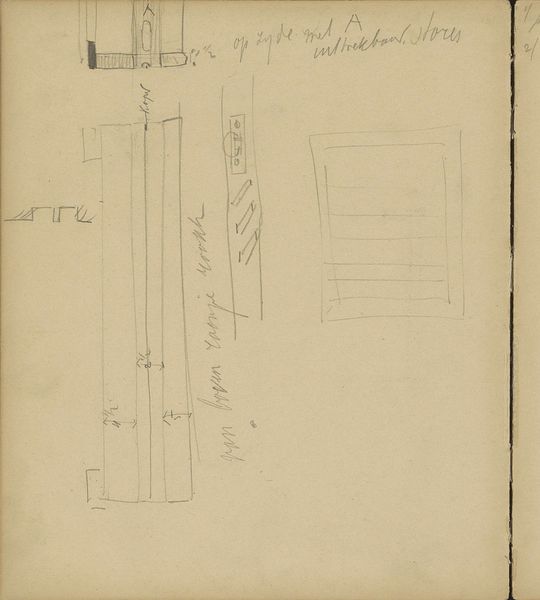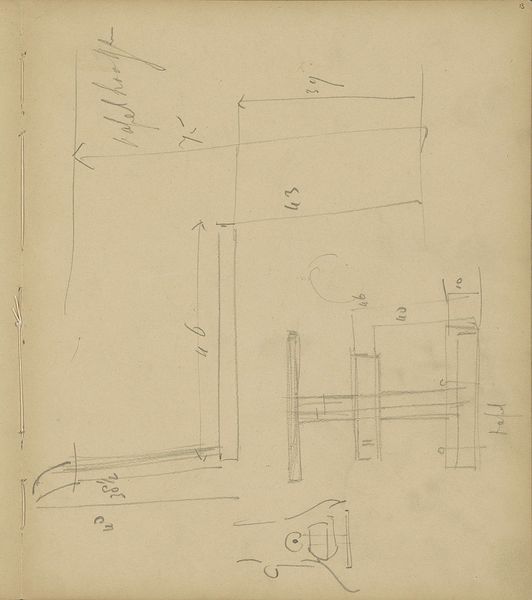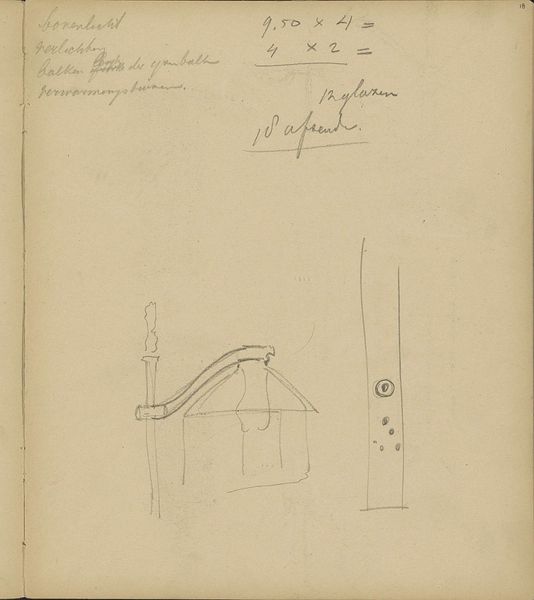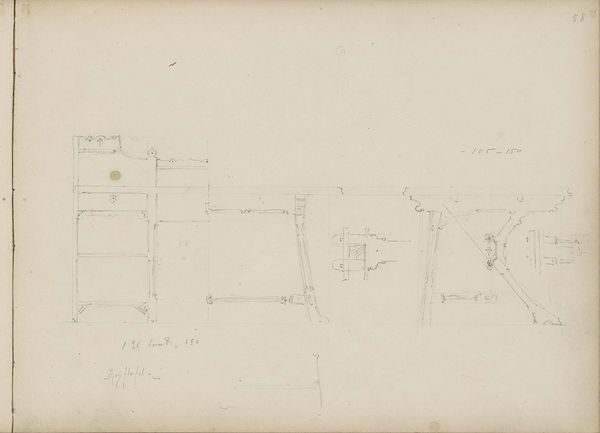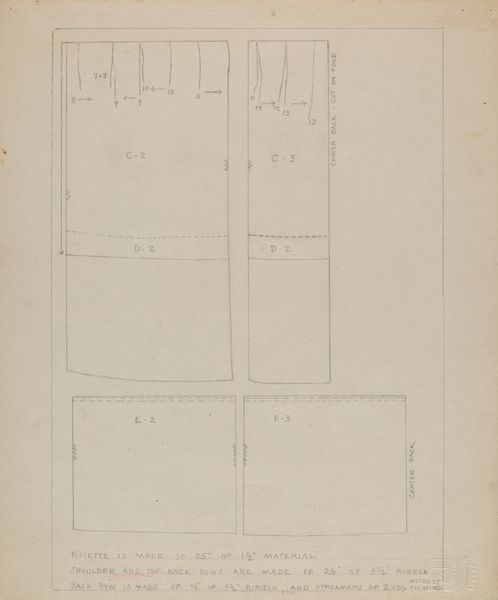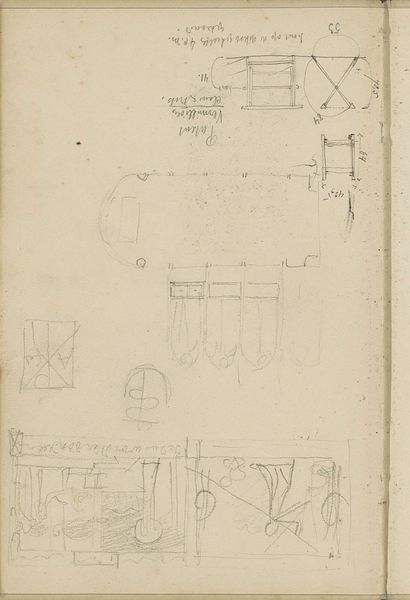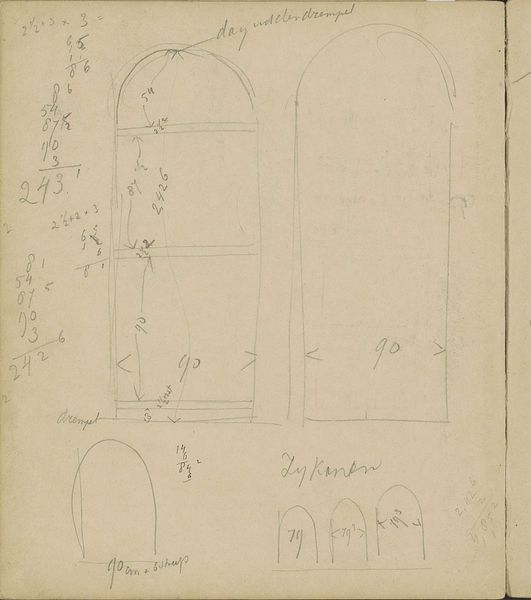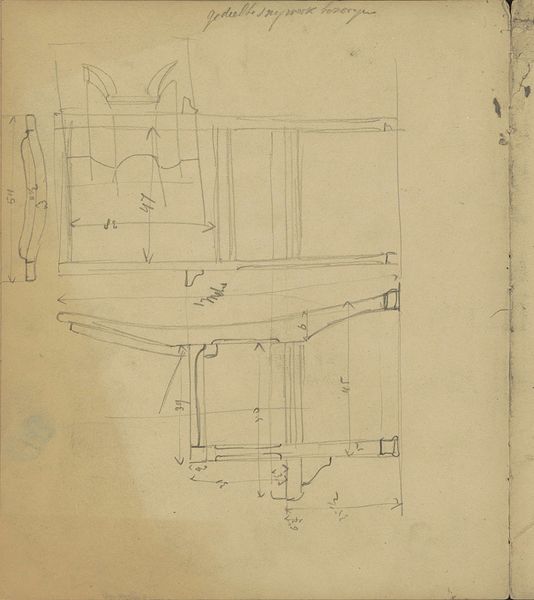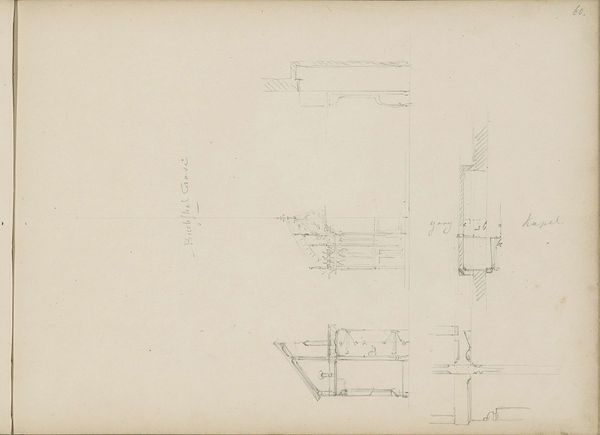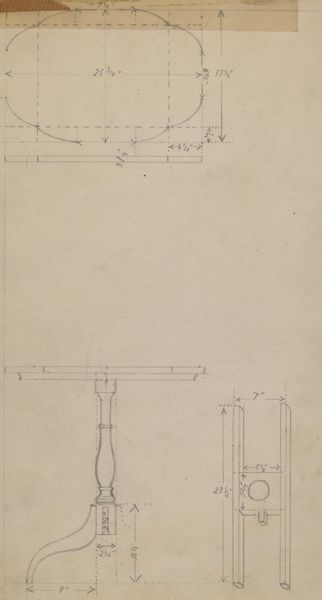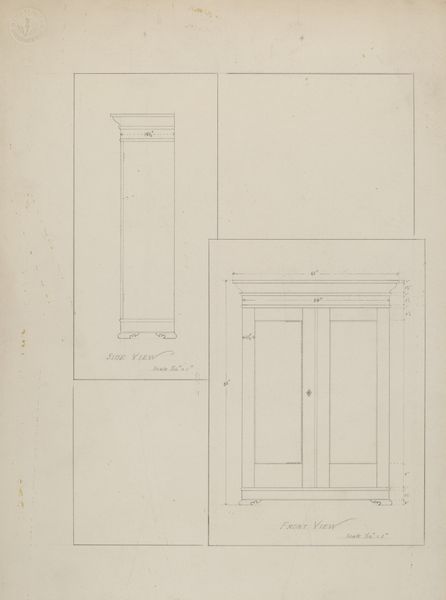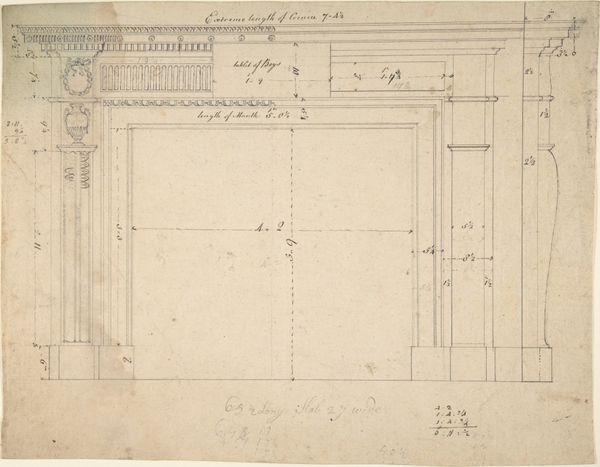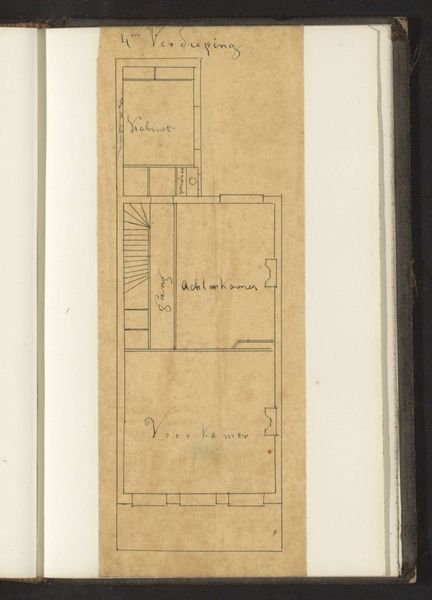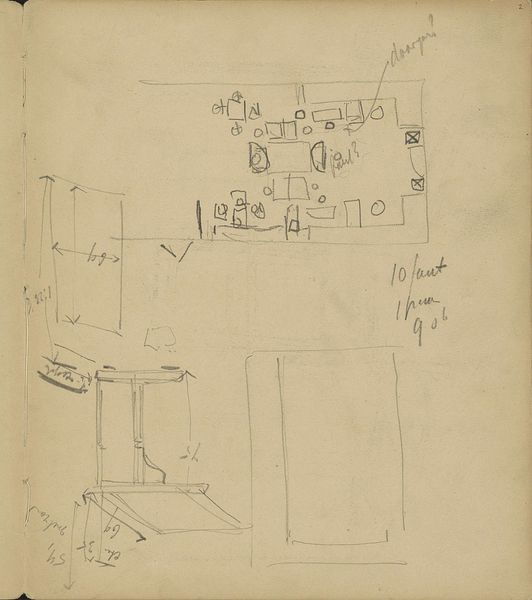
drawing, paper, pencil, architecture
#
drawing
#
aged paper
#
toned paper
#
homemade paper
#
ink paper printed
#
arts-&-crafts-movement
#
sketch book
#
hand drawn type
#
paper
#
form
#
personal sketchbook
#
sketchwork
#
geometric
#
sketch
#
pencil
#
line
#
sketchbook drawing
#
sketchbook art
#
architecture
Copyright: Rijks Museum: Open Domain
Editor: This is "Ontwerp voor een schouw," or "Design for a Mantelpiece," by Carel Adolph Lion Cachet, dating from around 1905-1906. It's a drawing in pencil and ink on paper and is currently held at the Rijksmuseum. It feels like a very technical drawing, almost like a blueprint. What strikes you about this design? Curator: The immediate sense I get is one of solidity striving towards ornamentation. Do you notice how the strong, vertical lines yearn upwards, only to be met by a softer, almost floral flourish at the top? It's like the practical weight of the hearth trying to speak the language of beauty. The symmetry reinforces the stability, while the hand-drawn lettering and loose sketches around the main form remind us of the artist's hand, his active thought. Editor: Yes, I see that contrast. The upper part seems so much lighter than the base. Were mantelpieces significant symbols during this time? Curator: Absolutely. Within the Arts and Crafts movement, the hearth wasn’t just a functional feature; it was the heart of the home, both literally and symbolically. It represented warmth, family, and tradition in an era of rapid industrialization. Lion Cachet's design here reflects a desire to ennoble everyday life through careful craftsmanship. Consider the geometric forms: what meanings might they have carried at the time? Editor: Maybe a sense of order and control in a changing world? A move toward more streamlined, less ornate designs than the Victorian era? Curator: Precisely. The artists and designers in the early 20th century embraced geometric patterns to reflect modernity while holding onto traditional values of craftsmanship and the family home. It is a careful balance of the past and future, the functional and the beautiful. What do you think that balance is saying? Editor: It's like trying to find comfort in something solid and reliable while still wanting to embrace new ideas and styles. I'm struck by how much thought went into something we might take for granted today. Curator: Indeed. This seemingly simple sketch reveals a complex cultural narrative. Looking closer at historical artifacts allows us to examine our own continuities with, and departures from, earlier symbolic languages.
Comments
No comments
Be the first to comment and join the conversation on the ultimate creative platform.
